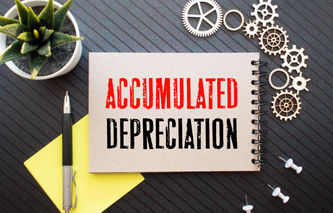Definition
The maintenance expense to fixed assets ratio allows analysts to understand the age or condition of the company's equipment. An increase to a company's repairs and maintenance expense to fixed assets ratio over time can signal aging equipment or assets that are being pushed to their operating limits.
Calculation
Repairs and Maintenance Expense to Fixed Assets = Maintenance and Repairs / Fixed Assets
Where:
Fixed Assets does not include accumulated depreciation.
Explanation
The repairs and maintenance expense to fixed assets ratio allows the investor-analyst, as well as the company's management team, to understand if the equipment used in production is in need of replacement. Lower ratios are desirable, while an increase to this ratio over time can be indicative of the following:
Aging equipment that is in need of replacement; resulting in a near term capital investment by the company.
Equipment that is being pushed to its operating capacity limits and is failing at a higher than normal rate.
The investor-analyst or the company's management team will need to track this metric over time to see if a pattern of increasing repair costs relative to fixed assets occurs. It's important to ensure fixed assets (the denominator in this equation) are not net of depreciation. A long term increase to this metric may indicate the company does not have sufficient funds to purchase new equipment.
While maintenance and repair expense is oftentimes combined with operating expenses, this detail may be available to the investor-analyst in the notes to financial statements. Fixed assets, including property, plant and equipment is typically included in a company's Form 10-K and is shown prior to accumulated depreciation.
Example
The information appearing in the table below was extracted from Company A's Form 10-K. Fixed assets are shown prior to depreciation and the year-over-year change to fixed assets was calculated by the investor-analyst. The corresponding repairs expense was included in the notes to Company A's income statement.
Year 1 | Year 2 | Year 3 | Year 4 | Year 5 | |
Fixed Assets | $25,560,000 | $26,071,000 | $26,462,000 | $26,727,000 | $26,861,000 |
Change in Fixed Assets | $511,000 | $391,000 | $265,000 | $134,000 | |
Repairs Expense | $1,840,000 | $2,164,000 | $2,249,000 | $1,630,000 | $1,155,000 |
Repairs Expense to Fixed Assets | 7.2% | 8.3% | 8.5% | 6.1% | 4.3% |
The information above reveals Company A's pattern of decreasing capital investments in new fixed assets. Through Year 3, this was followed by an increase in repairs expense, which was subsequently followed by a fairly sharp decrease in repairs.
The decrease in capital expenditures, followed by a decrease in repairs may indicate Company A is not only deferring the purchase of new equipment, but also costs associated with repairs to that same equipment.
Related Terms


